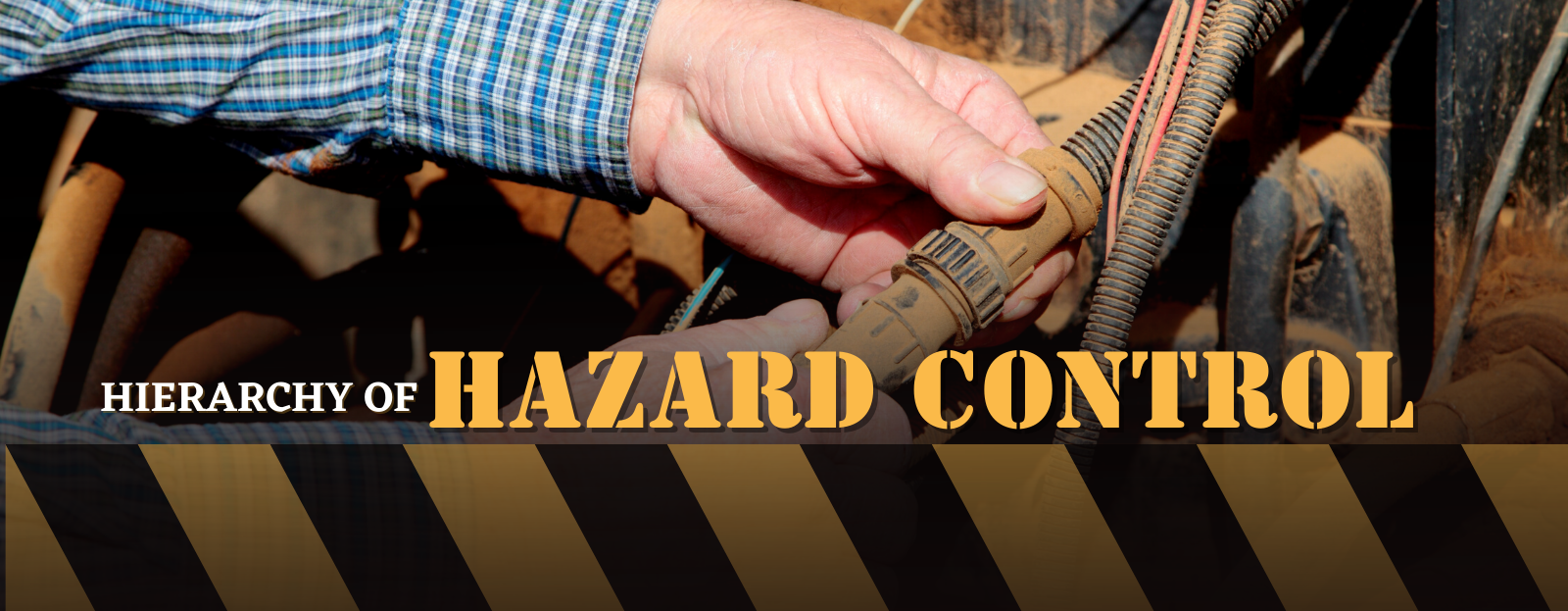CAAR members can have a significant impact on farmers and the safety practices they follow. This week is Canadian Agricultural Safety Week (CASW).
The call to action for CASW 2023 is Your Farm, Your Family, Your Success: a three-year campaign celebrating farm safety across Canada that encourages farmers, farm families, farm workers, and farming communities to commit to #FarmSafetyEveryday.
CAAR encourages members to be part of the safety discussion with farmers.
As noted in the headline, according to the Canadian Agricultural Safety organization, agriculture is the fourth most hazardous industry in terms of fatal injury rates. This means safety is also important to you and your organization as an agri-retailer.
Although it’s not possible to avoid the dangerous realities in agriculture, there are ways to minimize risks.
By using the hierarchy of hazards control, a guide that outlines effective techniques for keeping workers safe, it is possible to reduce the likelihood of incidents.
The hazards control hierarchy, from most to least effective, is elimination, substitution, engineering controls, administrative controls, and personal protective equipment.
The first step to implementing the hierarchy of hazards control is to identify what hazards are. From chemical hazards to properly using machinery, there are many areas that pose a higher risk of injury. Recognizing these areas will help determine which technique to apply from the hierarchy of hazards control.
Once the hazard has been identified, the next step is to determine what realistic solutions are available from the hierarchy of hazard controls.
1. Elimination
Eliminating a hazard is the most effective way to control a hazard. Eliminating a hazard could be as simple as sweeping the floor or tidying your workspace, but it is not always realistic.
2. Substitution
Substitution is the next best course of action after elimination. If the hazard cannot be removed completely, a safer substitute might be available.
3. Engineering Controls
When both elimination and substitution are not possible, the next option is engineering controls. This is designing or modifying a space to remove or minimize risk regarding a hazard. An example of engineering controls is using soundproof equipment or barriers to protect your ears from dangerous levels of noise.
4. Administrative Controls
After engineering controls, the next choice is administrative controls. This control is different as it doesn’t deal with the hazard itself, but the behaviour of those interacting with the hazard. Training, education, preventive maintenance, and safe workplace policies are all examples of administrative controls.
When possible, administrative controls should be used alongside another control. Personal Protective Equipment The least effective control is personal protective equipment (PPE). This control does not work to remove a hazard, it only helps reduce the harmful effects of it. When implementing PPE as a control, it is crucial to ensure all workers are trained in the proper way to use and maintain the PPE.
Once a control has been implemented, the hazard should be reviewed. This is to make sure the control is effective and to confirm that the control has not created another hazard. This review should happen immediately after implementing the control and anytime there are changes to the operation.
Although this process may seem simple, it is easy to ignore.
Commit to evaluating your workspace today and start establishing the controls needed. It may save a life.
Related Articles
- Canadians embrace sustainable food choices, survey reveals Sodexo Canada's survey shows increased Canadian interest in environmentally friendly eating habits. Sodexo Canada's ground-breaking Sustainable Food Barometer, in partnership with Leger, offers an intriguing glimp...
- Saskatchewan's global lead in sustainability Canadian farmers lead in low-carbon crop production, pioneering environmental stewardship In a recent study, Saskatchewan's farmers have been recognized for setting new standards in sustainable agriculture. The 20...
- Canadian Foodgrains Bank and Viterra fighting against hunger Canadian Foodgrains Bank, together with Viterra and its volunteer farmers, marks the eighth year of their joint efforts to tackle global hunger, utilizing farmland across Saskatchewan and Alberta. As reported on F...
- Will South American crops survive? Even with the flag of Brazil covered in soybeans, the dryness experienced within the Amazon rainforest is having a negative affect on the country’s corn and soy yield. By Colin McNaughton, Farms.com Risk Managemen...
- Perception gaps exist between farmers and consumers Research by Nutrien identifies key differences and similarities in agricultural views between farmers and North American consumers. In recent research by Nutrien Ltd, "Bridging the Agricultural Perception Divide,"...
 How to resolve AdBlock issue?
How to resolve AdBlock issue? 


Join the discussion...
You must be logged in as a CAAR member to comment.
Report
My comments